
While email marketers plan for the year ahead, it’s important to look back at new strategies that emerged and the learnings you can take forward. Below you’ll hear from industry experts on which email marketing trends they see bringing results in 2021.
From technological advances to the impact of Covid-19, the future of email marketing will bring both opportunities and challenges. To make sure you’re prepared, Brevo asked 15 email marketing experts which trends they see having the biggest impact this year.
Their insights include answers to questions like:
- Which strategies are likely to bring most success?
- How can email content better meet subscribers’ needs?
- What improvements and innovations can we make in email design?
By taking on board these predictions, you’ll be best placed to get the most out of your email marketing in the coming year.
Looking to power up your email marketing in 2021?Get started with Brevo free today and try powerful automation and segmentation tools that’ll take your email marketing to the next level. |
Top Email Marketing Trends for 2021
Table of Contents
The Covid effect
It’s impossible to talk about trends for the year ahead without mentioning the impact of Covid-19. The shifts it brought to so many aspects of our lives will last well into the future — and email marketing is no different.
While Covid-19 came with more than its fair share of challenges, there are also valuable lessons to take into 2021 and beyond.
The power of email in an age of social distancing
The pandemic forced businesses that had ignored email marketing’s potential to reconsider. Email copywriter Nikki Elbaz believes physical businesses should continue tapping into its benefits.
I hope we’ll see more brick and mortar locations building an email list and using it to increase loyalty and sell more. With the death of foot traffic from the pandemic, the inbox can become their version of showing up where the customer already is.
Even if your business activity is focused offline, you can use digital channels like email to draw in customers. Building an email list gives you a ready-made audience of people who’ve already shown interest in your business. Then, you can keep them coming back with regular, targeted campaigns that ensure your brand stays top of mind.
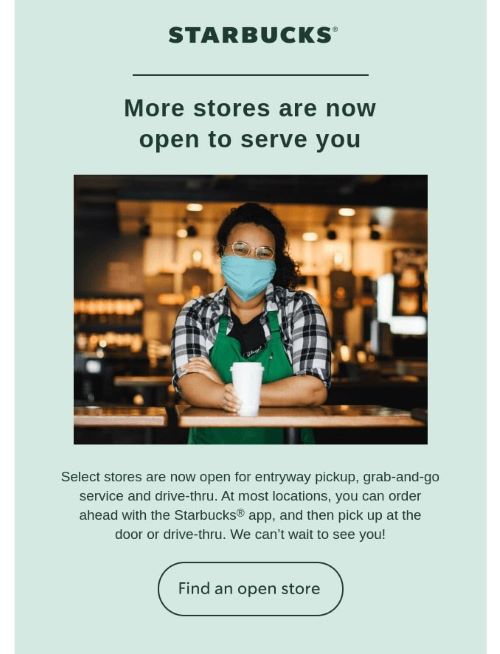
Learning to be more agile
If there’s one thing 2020 taught us it was how to deal with the unexpected. This led email marketers to adapt their ways of working, as Chad S. White, Head of Research at Oracle Marketing Consulting, observes:
2020 and 2021 highlighted a need for brands to be more nimble and responsive with their email marketing. In 2021, that will translate into a push to automate more content using personalization and AI-driven recommendations. But even more than that, email programs will seek to simplify and speed up their email builds, leading to a surge in adoption of modular email architecture.
At the height of the Covid crisis, most of us didn’t have the time to build individual email campaigns from scratch. Take the opportunity now to prepare different blocks for your email designs that you can use depending on your content needs. Then, when it comes to creating a campaign, you’ll already have the necessary elements to hand.
Ryan Phelan, co-founder of Origin Email Agency, warns this need for proactivity isn’t going anywhere with more shifts in customer behavior set for 2021.
Post Covid is going to be crazy for marketers. You have vast sections that will start down a vaccine path and change their behaviors once again. Are you ready? Are you listening to the signals and adapting? Your customer models are fluid and your strategies need to be agile and well thought out.
For Gavin Laugenie, Head of Strategy & Insight at dotdigital, technology will be the key to navigating this uncertainty.
It’s always tricky predicting or anticipating trends because change is inevitable. 2021 highlighted that fact more than ever. Brands were dealt a bum hand; it was all about how we adapted to the obstacles in our paths. Which is why I say, 2021 is the year of adaptability.
Your marketing needs to mirror the same agility you and your team display. That means having powerful data-crunching AI to segment and serve up accurate data to deliver targeted messages to your audience on the channels that will make the most significant impact at any given time. Email remains king, but as consumer behavior continues to change regularly, complementing email with live chat, SMS, push etc. will help deliver the contextual messages your customers demand.
The inbox is more crowded than ever, so your content needs to be empathetic, thought-provoking and not solely conversion driven. Spice up your creative; show some flare, be interactive, sow the seed of intrigue. But above all, have faith in your tech and be ready to rip up plans and pivot when circumstances inevitably change, and you require a new strategy.
Strategies for email success in 2021
With agreement on the fact that 2021’s challenges aren’t behind us just yet, email marketers must find new ways to maximize their results. Below, experts share the strategies they think will bring most value.
Securing your place in the inbox
Scott Hardigree, founder of Email Industries, sees deliverability as a key challenge to address.
You’ve got to be in it to win it.
Good deliverability has always been vital to brands but it’s getting harder to hit the inbox consistently, which forces marketers to do more than the minimum. In 2021, high email deliverability rates will be reserved for brands that do the hard work and adhere to best practices.
Once you’ve taken the basic steps to improving your email deliverability, Adam Holden-Bache, Director of Email Marketing at Enventys Partners, advises looking into the more technical aspects.
Brands need to ensure they have completed the necessary steps for email authentication and need to be reviewing analytics to identify any points of failure in their email deliveries. Additionally, brands should determine if BIMI is something that will provide further benefits.
While the email authentication standards SPF, DKIM, and DMARC have been around a while, the arrival of BIMI offers new possibilities beyond just protecting your deliverability.
Lauren Meyer, VP of Industry Relations & Compliance at Kickbox, explains why BIMI is an email marketing trend you should look into:
Pronounced as “Bih-mee”, BIMI (Brand Indicators for Message Identification) is an emerging email specification that allows email marketers to stand out within an ever-crowded inbox by displaying brand-controlled logos right beside the emails they send.
Verizon Media Group (Yahoo / AOL) already publicly supports the use of BIMI, while Google announced the start of a pilot program in July 2020. This means you’ll likely see an increasing amount of brand logos showing up in your inbox as 2021 progresses.
The benefits of implementing BIMI for your brand go beyond simply having your logo appear within subscriber inboxes. The process itself is one that forces you to have all of your authentication properly set up. BIMI also requires you to have a reasonably good sender reputation.
Both of these things will help you avoid deliverability issues and keep your emails flowing into the inboxes of your recipients, which is why working towards implementing BIMI is such a valuable use of your time in 2021.
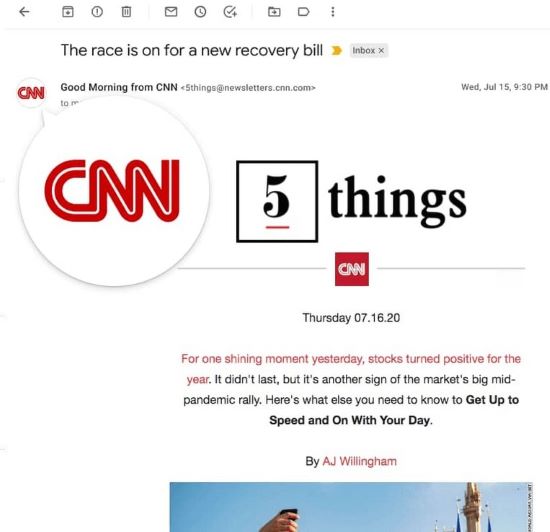
Capitalizing on advances in email marketing technology
Not only is emailing software becoming more powerful, but advanced features are now more accessible thanks to the growing number of affordable options on the market.
One email marketing trend that Adam Holden-Bache sees taking off this year is the use of AI.
AI tools have come a long way recently and using them to help craft subject lines, calls-to-action, and content can generate a significant boost in campaign results.
Adam also highlights send time optimization as a way today’s email marketers can benefit from machine learning.
Emails don’t all need to be sent at once. Sending at the time when a recipient is most likely to be in their inbox is also a tactic that can help improve engagement.
Be sure to do some digging into your email platform’s features and keep an eye out for updates to make sure you’re using them to their full potential.
💡 Tip: If you’re a Brevo user, keep up to date with all our latest releases and product updates in one place!
Personalized experiences through automation
To truly tailor your emails to each subscriber you need to look beyond the basic contact information you have. And according to Nikki Elbaz, marketing automation holds the answer:
Personalization is a buzzword that has no meaning anymore — {{ contact.FIRSTNAME }} has become just another gimmick. But, relevance is key to getting the performance we need — and so personalization is critical. So, how can we personalize in a way that’s authentic — and helpful for our subscribers?
Behavioral-based, triggered emails are showing a lot of promise. After all, what’s more personalized than emails served up based on where the customer is in their journey and what they need to hear from the company?
Sure, you need to send time-based emails in many instances. But there are a lot of unique opportunities for behavioral-based emails and it’ll do us good to pay attention and lean into them. Yes, it’s more work to set up. But the engagement payoff is huge.
Jeanne Jennings, founder and Chief Strategist for Email Optimization Shop, also sees behavior-based automations as a key email marketing trend to focus on.
The future of email marketing lies in having a stable of automated campaigns which are triggered by individual subscriber actions and personalized/customized to boost relevance. This is passive income; I’m already working toward this future with my clients. If you’re not, you’re behind. This is your chance to catch-up.
How you should integrate automated emails into your customer journey will depend on your business. Start by taking stock of key touchpoints to identify where you could add value.
For example, if a prospect shows interest by browsing a product on your website or downloading your content, you could trigger targeted emails to nurture the relationship. For newly acquired customers, an onboarding email series can help sustain their engagement.
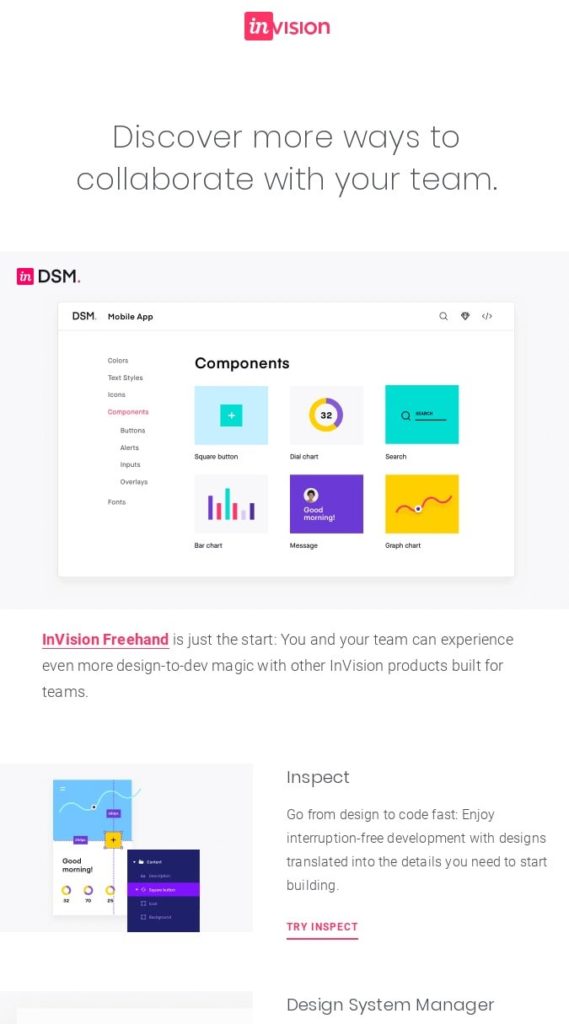
A less rigid approach to engagement segments
Dela Quist, founder of Alchemy Worx, suggests we should re-evaluate traditional strategies for dealing with active and inactive subscribers.
The trend we see really paying off for brands in 2021 is Audience Management. That is a move away from pulling and marketing to segments — a reactive process, to a proactive approach to engagement, that takes behavior from all channels into account.
Subscriber engagement does not remain constant. Over a 2 or 3-year period it fluctuates between full on and no engagement on a regular basis, depending on where they are in the purchase cycle.
Three variables impact the size of your engaged subscriber file:
- Acquisition rate: Subscriber engagement is usually at its highest following acquisition and falls over time
- Loyalty rate: How long on average they remain engaged
- Win-back rate: How long on average they remain disengaged.
Our goal is to increase post-acquisition loyalty rates and improve win-back rates. The focus for 2021 should not be next week’s numbers, it’s about the long term. Loyalty builds incrementally with each additional engagement cycle, so each time re-engagement generated by your win-back activity occurs you get greater loyalty and a higher lifetime value.
By neglecting seemingly disengaged subscribers you risk missing out on contacts who could be valuable in the future. Instead, experiment with targeted reactivation campaigns to bring them back into your active segment.
Email content trends
Now you know how you should approach your email marketing this year, it’s time to look at what you’re putting in your campaigns. Subscribers have raised their expectations and only brands whose emails truly focus on their needs will earn their attention.
Emails that do more than sell
Today’s subscribers want more from your emails than endless promotion of your business. That’s why Rob and Kennedy, the Email Marketing Heroes duo, advise a change of approach in your email content:
In 2021 we need to obliterate the idea of some emails being value and others being offers and mix them up into one thing.
Think about it, if someone only emails you to tell you what new products or services they have then you’ll only feel compelled to open those emails when you’re either wanting to know what they’re selling, or you’re looking at buying.
Which explains why open-rates are so pitifully low for most emails, right?
The best way to combat this is to make sure there’s a strong reason to open your emails, regardless of whether you’re selling something or not.
The way to do it?
Make sure your emails are valuable to your reader in and of themselves.
Relevant educational content like tips and inspiration can sustain subscribers’ interest, while building trust in your brand. Set their expectations from the start by emphasizing the value you’ll offer when collecting signups. Then, if you stick to your promise, you’ll grow a list of engaged subscribers to convert when the time is right.
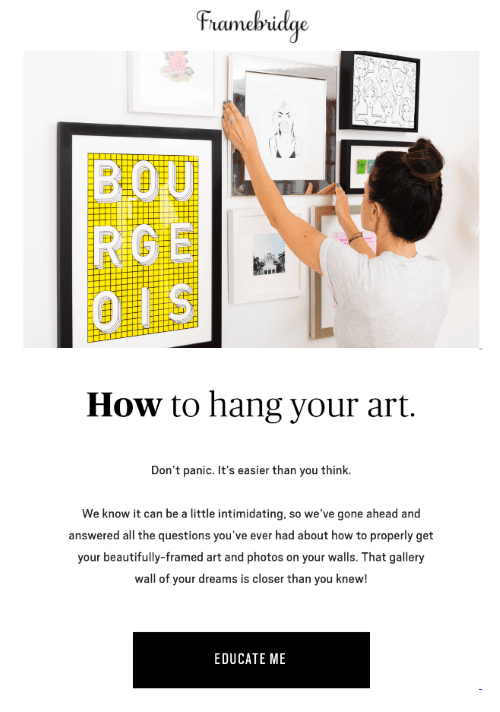
Messaging guided by empathy
Another instant turnoff for subscribers is misjudged messaging. Emily McGuire, owner of Flourish & Grit email marketing agency, sees this as an issue to address this year.
Being tone-deaf costs money. In 2020, we saw inauthentic email marketing messaging that glossed over the real suffering of grappling with a pandemic and a louder call for racial justice.
How does that happen?
Whatever you want to call it: a lack of perspective, a misunderstanding of your audience, or burying your head in the sand. It’s all a lack of empathy.
Emotions are powerful. It’s how we make many of our decisions (whether you want to admit it or not). If your messaging literally makes your audience say “Ew” out loud to themselves, you’re lacking empathy.
This year, getting to know your subscribers and what turns them off is going to avoid missteps along the way.
Empathy means creating experiences and content that make your audience feel good, not “WTF?”. That translates to better relationships which translates to more repeat dollars.
Don’t forget that behind each email address is a real person. By considering their unique needs you can prevent your email coming off as generic and therefore inauthentic. Your copy should reflect this by using “you” to address the reader directly. If the focus is on yourself with too much “I”, “we”, and “our” that’s a red flag.
Email design trends
As email marketing technology evolves so too do the needs and expectations of recipients. When looking at the latest developments in email design, it’s not just about what’s possible but what will make for a better user experience.
Shaking up the design process
New priorities are changing the way email marketers approach design. For example, Anne Tomlin, founder of email coding service Emails Y’all, thinks brands will start taking more notice of dark mode.
Currently, most brands do not take dark mode into account at all when designing emails. There aren’t many developers using the controls we do have over some dark mode renderings. I believe most people in the industry have taken a “wait and see” attitude and require hard numbers on the adoption of dark mode by subscribers.
This year, I expect those statistics to be gathered and published, and they should show that many subscribers use dark mode. Once the adoption rates are known, brands will either create a separate dark mode design or modify designs to work in both light and dark modes. Once brands start doing this, I expect more email clients to change from automatically inverting colors to respecting the media query that controls dark styles.
Here are some quick tips to help you create dark mode-friendly emails:
- Use transparent image backgrounds to avoid white blocks around them
- Add a white outline to images with dark text, including logos, so they remain visible
- Test how your email looks in dark mode before sending
Meanwhile, Mark Robbins, email developer at Salesforce, hopes accessibility will become a requirement when approving designs.
I hesitate to call accessibility a trend as it should be considered a standard. But I think there is a growing respect and understanding of accessibility in email. It’s a big task and requires collaboration and compromise between copy, design, development, and QA. Which is perhaps why progress has been slow but steady. For me the key part here is QA, if an email is not accessible it should fail QA and be sent back for amendments.
To paraphrase Sir Tim Berners-Lee’s famous quote about the web;
“The power of [email] is in its universality. Access by everyone regardless of disability is an essential aspect.”
Here are some basic checks you can make to improve the accessibility of your email designs:
- Choose a clear typeface and a larger font size and line height
- Left align text
- Avoid large blocks of text
- Use contrasting colors, especially between your copy and background
- Avoid text in images and use alt texts
- Use large buttons for links
To successfully implement these email design trends, they can’t be just an afterthought. Instead, Annett Forcier, founder of Email Boutique, underlines the need to embed them into design practices.
I believe this is a good time for brands to review brand and style guidelines. Technology has moved forward. Dark mode has been rolled out a while ago and accessibility is a big concern. Developers can help to improve the user experience but it would be much easier if technical possibilities and limitations would already be considered in the design process.
Balancing innovation and simplicity
With increasing possibilities in email design, email strategist and copywriter Samar Owais encourages you to explore new ways to engage subscribers.
Emails that use content to sell are great. But sales emails that are interactive and fun? Even better! You can use something as simple as a poll to customize a subscriber’s email shopping experience.
Mark Robbins agrees that interactive emails don’t have to be complex to have an impact.
After its initial boom of interest around 2014 interactive email has been a little quiet of late. But recently I feel there has been a shift in the approach.
Initially, focus seemed to be more on one-off emails, flashy custom designs that looked great but were a lot of work to produce. More recently there is a growing trend to use interactive elements in more reusable templates. These everyday emails may not be as flashy or impressive at first glance but they are reaching a much wider audience and adding better user experience for those users leading to better overall results for the senders. And with growing support for AMP, it’s now getting quicker and easier for senders to use interactive email.
Here are some ideas for simple interactive email elements to try:
- Image carousels to show multiple products
- Accordions to condense long text
- Surveys, polls, and quizzes to get to know your audience
- Review and rating requests after purchases
- Hidden content such as offers that users click to reveal
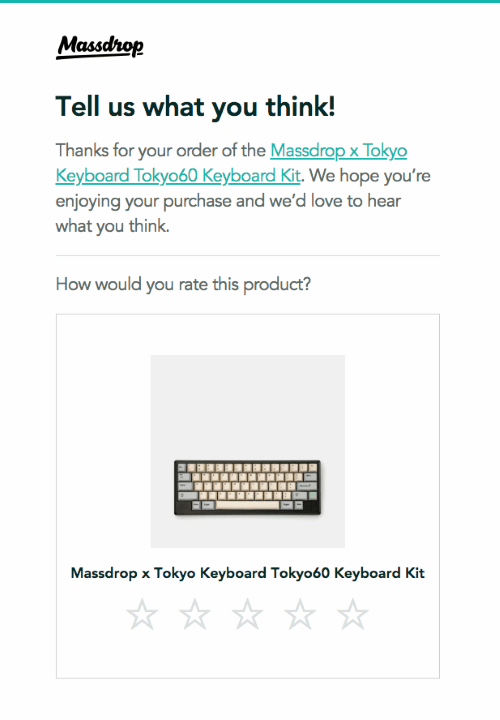
When it comes to trying out new design elements, they should be used wisely. Ryan Phelan warns:
Don’t be distracted by the shiny tactics that exist. They have a place, but when used as “occasional use technologies” you can make your email pop, without becoming stale. Test and find the right audiences where specialized content resonates.
In some cases, sticking to old-school formats is the way to go. For example, Samar Owais explains why we shouldn’t dismiss the value of text-only emails:
Yes, ecommerce is all about well-designed emails but nothing beats an email that looks like a personal email. Think a more personalized version of Sticker Mule’s emails. Because while every other brand is sending their fifth version of “In these unprecedented times” email, you’re talking to them one-on-one. And that is going to make your subscriber sit up and take notice.
Which Email Marketing Trends Will You Take into 2021?
Now you have the insider knowledge on the developments shaping the future of email marketing, it’s up to you to decide which ones are most relevant for your business and audience.
To recap, here are some of the key trends to guide your email marketing in 2021:
- Staying agile in a context of continued uncertainty
- Putting the work in for better deliverability
- Using technologies like automation and AI to maximize results
- Ensuring subscriber needs are at the heart of email content and design
Is there anything else you think email marketers should be focusing on in 2021? Let us know what you’d add to the list in the comments below.







Comments
Really had a great time reading this article!